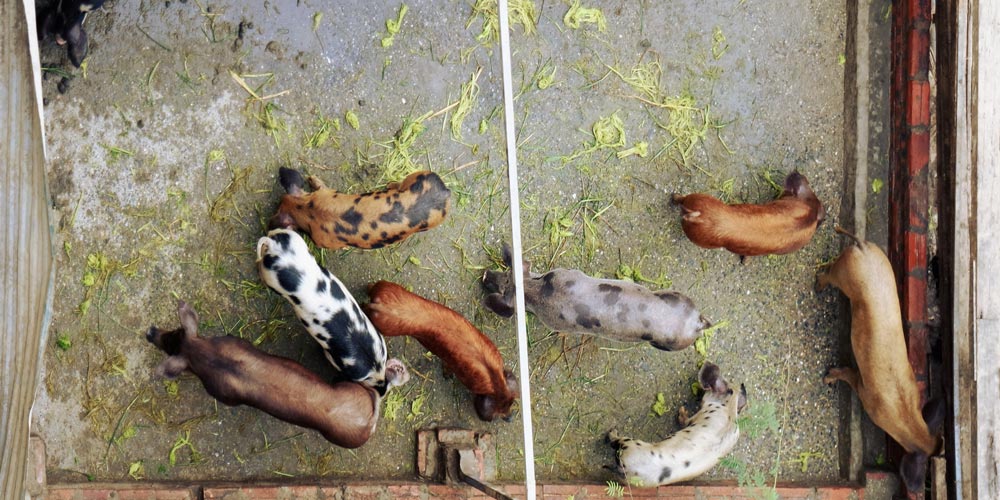
Background and Overview
This month, China reported its first outbreak of African Swine Fever (ASF), a deadly viral disease affecting domestic pigs and wild boar. Risk-assessment models (PDF), wary surveillance measures, and strict import protocols have historically protected the world’s largest producer and consumer of pork.
These surveillance measures are not failsafe, however, especially when the country relies on small, backyard farms for much of its pork production. These smallholdings often lack robust biosecurity measures, accurate record-keeping, and the ability to rapidly identify and report suspected ASF cases.
Government officials first identified the disease on August 1, 2018 on a small farm in the northeast province of Liaoning. China’s Ministry of Agriculture and Rural Affairs launched a level II emergency response to stop animal movement into and out of the area, cull and dispose of affected pigs, and disinfect the area.
Officials killed and disposed of over 8,000 pigs within the designated epidemic zone, a physical area extending 3 kilometers from the edge of the outbreak site. Officials also screened 1.88 million live pigs at nearly 262,000 screening sites such as farms, slaughterhouses, and markets, and declared them all negative for the virus.
World Organisation for Animal Health
Developing: New case identified on August 16, 2018
Following nearly two weeks of containment efforts, disinfection, and active surveillance with no new cases, Chinese officials identified a second case of ASF on Thursday. 30 pigs died at a large, commercial slaughterhouse in Zhengzhou, the capital city of China’s east-central Henan province.
The pigs traveled over 1,400 miles to the slaughterhouse from a farm in Jiamusi city, 500 miles northeast of the first reported outbreak. This development raises new concerns about the breadth of the outbreak as infected pigs traveled through dense swine production regions to the center of pig production.
The pigs were identified prior to slaughter and did not enter processing. Authorities suspended operations, closed the slaughterhouse for 6 weeks, and instituted a 6-mile no-movement zone. Officials have traveled to the farm in Jiamusi for further investigation.
What next?
Experts fear that an ASF outbreak could be catastrophic to China’s pork industry, destroying small farmers’ livelihoods, challenging food security needs, and altering trade regulations with other countries.
An early report showed that some Chinese pork companies’ stocks dipped in response to the case identified on August 1, but held steady as the case remained controlled. Initially, experts believed the long-term economic effect of the first, individual outbreak to be negligible. The August 16 case may shift the economic discussion. The pigs were found at “China’s #1 butcher,” a slaughterhouse owned by Shuanghui Development, a subsidiary of WH Group, Ltd. Following Thursday’s news, WH Group shares dropped 11% and other prominent food companies felt similar hits.
Unanswered questions remain. Experts suspect that ASFV entered China through feeding domestic pigs swill, untreated food waste in which the virus can survive. But, how long was the virus in the country before animal health officials detected it? On Wednesday, the Chinese press reported the outbreak started in April. How many other farms are potentially affected? Will the virus become endemic in China among the wild boar population? Wild boar populations flourish in China, but solid data is lacking on the density and geographic distribution of these populations. What about the Ornithodoros tick, the vector that maintains ASF in warthogs in sub-Saharan Africa? China lacks population data on this tick, too.
Experts Weigh In - An interview with Dr. John Deen
Earlier this week, I reached out to Dr. John Deen, a Distinguished Global Professor in the Department of Veterinary Population Medicine, part of the College of Veterinary Medicine at the University of Minnesota. He works in the area of epidemiology, especially in pigs, and has been involved in the Chinese pig industry for the last 20 years.
The interview reflects Dr. Deen’s opinion following the initial outbreak identified two weeks ago. We will follow up with Dr. Deen and other swine experts next week as information about Thursday’s case develops.
Lauren Bernstein (LB): The media representation of the outbreak seems to be relatively calm. Is this an accurate representation of swine disease experts, swine producers in China, and other stakeholders?
John Deen (JD): As you mentioned, there are a number of questions concerning this case. It would be very fortuitous if it is the index case and it did not spread beyond this farm. As the time goes on with no further cases identified, this becomes more likely. Surveillance and biosecurity efforts have been stepped up, especially in the region, and most of the efforts are focused on decreasing the likelihood of spread, if the virus is still present, and identifying any remaining infected pigs.
LB: I read that Japan temporarily suspended some Chinese pork imports, including heat-treated pork, sausage casings, and heat-treated straw used for bedding. Japan has also enforced quarantine at its airports and seaports. How do you think this outbreak will affect trade relations with Japan, South Korea, and other countries?
JD: The effect will be minimal, as China is a net importer of pork. There is an increase in inspection at borders, but most of this is directed at travelers who are possibly carrying infected foodstuffs.
LB: For the past number of years, Chinese swine production felt a push from smaller, traditional farms to larger herds. Do you think this outbreak will drive this effort further in terms of better biosecurity and disease surveillance?
JD: Undoubtedly, this has created a greater focus on farm level biosecurity and surveillance, with a better understanding of the clinical signs of ASF. Biosecurity has been focused on viral diseases such as PRRS [Porcine Reproductive and Respiratory Syndrome] and PED [Porcine Epidemic Diarrhea], and the same steps serve well against farm to farm movement of ASFV. A large concern is with the feeding of food scraps to pigs, which occurs mostly in backyard smallholders and traditional small farms. The proper selection and treatment of food waste before feeding to pigs is a major focus.
LB: What regulatory measures has China taken or will China take moving forward?
JD: China has similar regulations to most countries, which focuses on the prevention and control of entry of new diseases, as well as the control of challenging diseases such as FMD [Foot and Mouth Disease]. With the scale and breadth of the industry, enforcement of those regulations is a challenge, especially the management of food waste by smallholders.
Questions, comments, feedback about today's Weekly Update? Please email Dr. Lauren Bernstein
Receive the Weekly Update right in your inbox on Tuesdays and Thursdays. Subscribe now at z.umn.edu/WeeklyUpdateSubscribe
